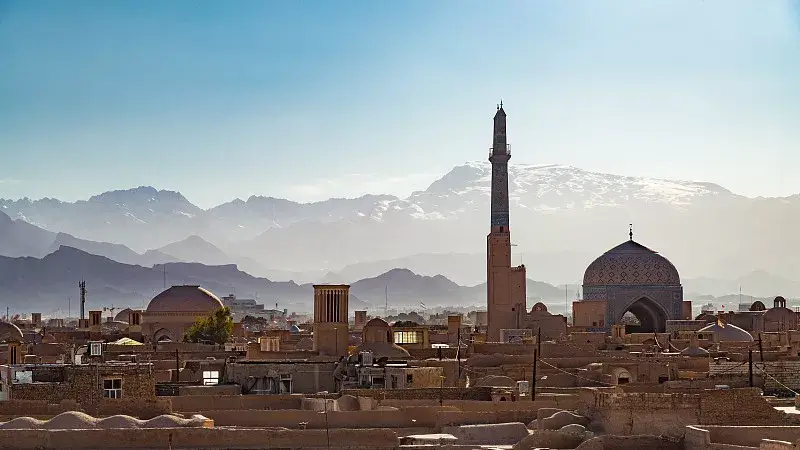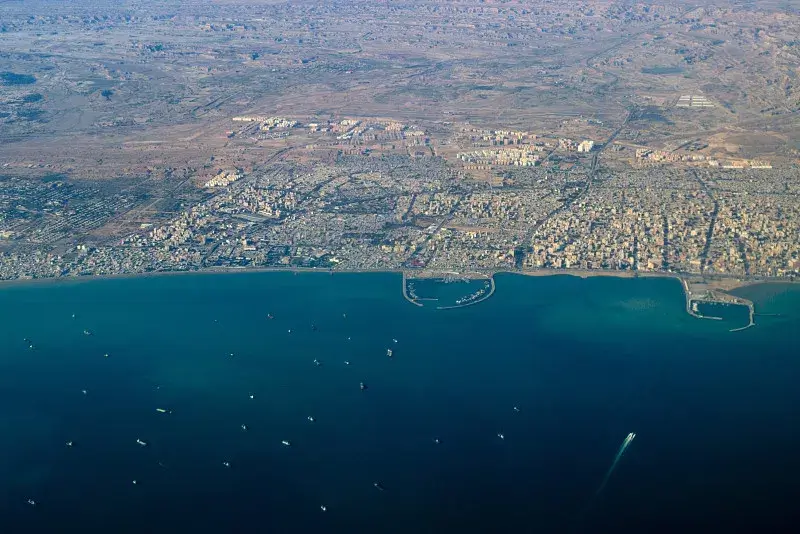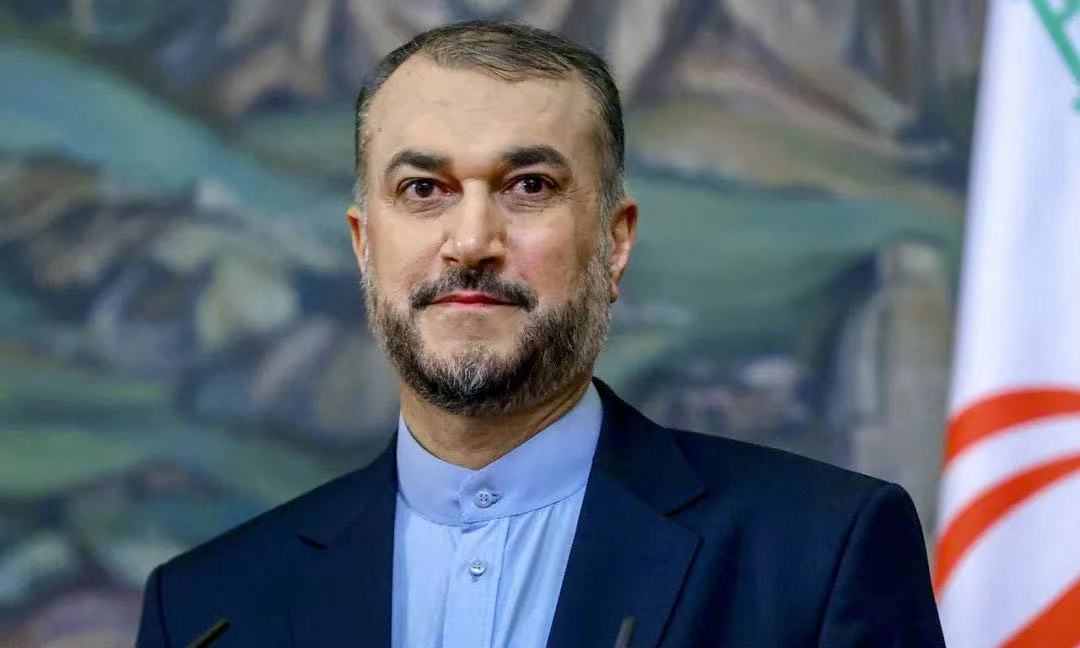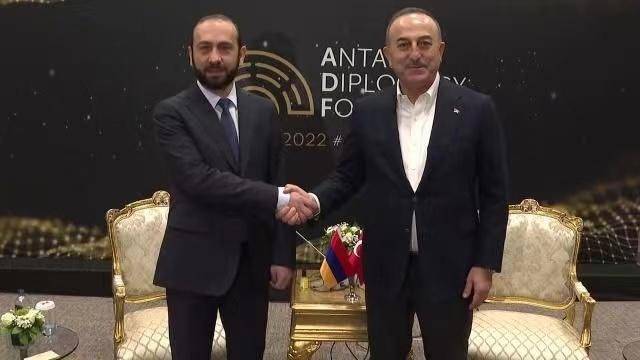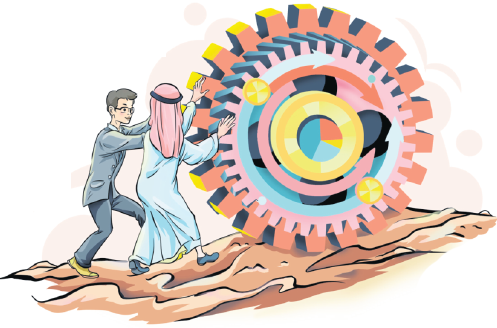
Despite the complicated international situation and daunting challenges brought about by the COVID-19 pandemic, China's political relations and strategic cooperation with Middle East countries maintained strong momentum in 2021. The Middle East region has greater significance in Chinese diplomacy, and regional countries are more inclined to adopt a "Look East" policy.
As a result, the two sides have strengthened high-level exchanges, bilateral cooperation has become more institutionalized and anti-pandemic collaboration has become a stellar example of the two sides building a China-Middle East community with a shared future. Actively fulfilling its commitment of making COVID-19 vaccines a global public good, China has donated and exported 440 million doses of vaccines to Middle East countries, providing a material guarantee for their anti-pandemic efforts.
Last year also marked an important step toward more institutionalized development of China-Middle East relations. Based on existing cooperation mechanisms such as the China-Arab States Cooperation Forum, China and Middle East countries have successfully established a number of new cooperation platforms.
The "Look East" policy of Middle East countries reflects the ongoing adjustment of foreign policy based on their own development demands.
Strong economic complementarity is the foundation for deeper bilateral cooperation between the Middle East countries and China. China's enormous energy demand and economic complementarity to Middle East countries have laid a solid foundation for partnership. On average, China imports nearly 5 million barrels of oil from the Middle East each day, among which 40 percent is from Arab states. In 2020, the trade value between China and Gulf Arab states exceeded $160 billion. China has been Saudi Arabia's largest trading partner for 10 consecutive years with bilateral trade hitting $67 billion in 2020, and Saudi Arabia has become China's largest trading partner in the Middle East region. Oil imports from Saudi Arabia are crucial to China's energy security, while Saudi Arabia needs such a big oil importer as China amid severe competition in the global oil market.
China is also helping Middle East countries with their economic restructuring. Reducing reliance on oil to diversify their economies is yet another goal of Middle East countries. For instance, Saudi Arabia's Vision 2030 strategic framework aims to reduce the country's dependence on oil by diversifying its economy. Gulf Arab states including Saudi Arabia, the United Arab Emirates and Oman are actively seeking to align their development strategies with the Belt and Road Initiative proposed by China, in an attempt to attract more investment from China to facilitate their domestic economic transformation. Apart from bilateral cooperation under the framework of coordinated development strategies, China and Saudi Arabia are exploring third-party market cooperation in countries such as Pakistan.
The developed European nations and the United States used to be the destination for the majority of investments made by the Gulf Arab states, while nowadays, Saudi Arabia, the United Arab Emirates and Qatar are reinforcing cooperation with China in emerging areas including technology, manufacturing, fisheries and nuclear energy. Also, China has become an important source of investment in Arab states.
The alliance between Middle East countries and the US has been significantly undermined. The alliance between oil-exporting Middle East nations and the US, based on "cheap oil in exchange for American protection", used to be the cornerstone of their diplomacy and security strategies. However, since the US realized energy independence, that alliance has been shaken to the core. Asian countries including China and India have now become the largest markets for Gulf states' oil exports.
Furthermore, the US' focus is no longer on the Middle East. A number of incidents-including the Arab Spring, the attack on Saudi Aramco's petroleum tank farm and the turmoil in Afghanistan-have caused a crisis of confidence among the US' partners in the region. The "value-based alliance" touted by the Joe Biden administration has put great pressure on Middle East countries, which have long been criticized by the US for alleged human rights abuses. Iraq was the only Arab country invited to the US' so-called Summit for Democracy. Therefore, Middle East countries are betting on both sides amid the China-US competition, so as to avoid the risk of relying only on the US.
The US, on its part, is trying to make the Middle East a new arena in which to contain China's development, with more evident measures aimed at ostracizing and suppressing China in the region. The US has been pressuring regional countries to pick sides against China amid the China-US tensions, in an attempt to undermine their strategic cooperation with China, forge an anti-China alliance in the Middle East, and rigorously prevent China from "filling up the strategic void" created by the US' strategic shift in the Middle East.
Since President Biden was sworn into office, the US has sought to maintain its influence in the Middle East without continuing to invest resources in the region. In sharp contrast, China and Middle East countries have scored notable achievements in energy, technology, medical collaboration, among other areas. Regional countries are clearly aware that economic dependence on China and security dependence on the US will continue to exist for a long period to come.
Promoting peace through development and cooperation is the guiding principle of China's Middle East policy. China attaches great significance to Middle East countries' development concerns and is committed to aligning the Belt and Road Initiative with their development strategies, placing equal significance on improving the regional economy and people's livelihoods and its own economic benefits.
In 2021, China and Middle East countries strengthened their traditional friendship and bolstered pragmatic cooperation. In the future, bilateral relations will usher in brighter prospects with greater development.






